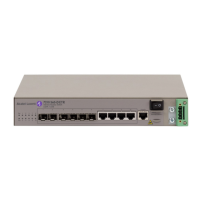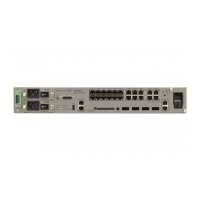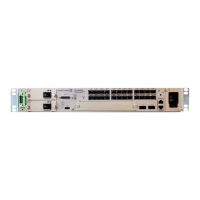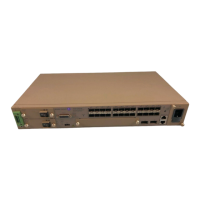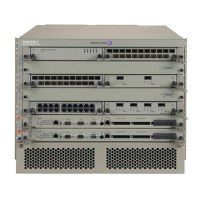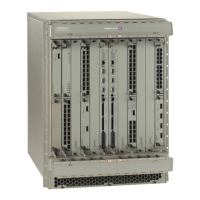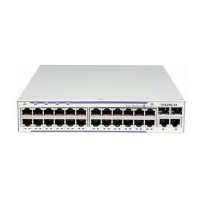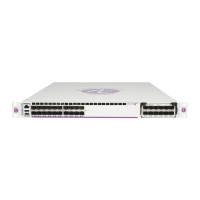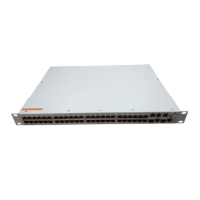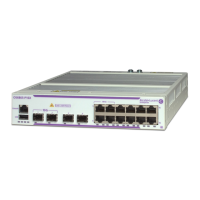QoS Policies
7210 SAS D, E, K OS Quality of Service Guide Page 63
Buffer Pools
Buffer pools are used to manage the packet buffer memory resources used to store packets and
absorb bursts received on a queue.
Buffer Pools on 7210 SAS-E and 7210 SAS-D
Buffer pools cannot be created or deleted in the 7210 SAS. The egress buffer pools are distributed
as network egress buffer pool for access-uplink ports and access egress buffer pool for access
ports. Based on the maximum number of ports to be supported for access and network, the total
buffer is distributed into the access egress buffer pool and the network egress buffer pool. The
distribution of the buffers into access and network egress pools take care of the buffer
requirements at the port level for various queue shaping/ scheduling mechanisms and for various
packet sizes varying from 64 bytes to jumbo frames. Each port on the system gets an equal portion
of the available buffers. From the buffers allocated to a port, each queue gets its CBS amount of
buffers. The remaining buffers are allocated towards the shared MBS pool per port. All the queues
of the port can use the buffers from the shared MBS pool.
Buffer pools on 7210 SAS-K
The total amount of available buffers (~64MB) is divided among the 5 buffer pools listed below. In
addition some of the buffers are reserved for system internal use (such as, Multicast queues).
In-Profile Out-Profile
Network-Control (nc) 7 7
High-1(h1) 6 6
Expedited (ef) 5 5
High-2 (h2) 4 4
Low-1 (l1) 3 3
Assured (af) 2 2
Low-2 (l2) 1 1
Best-Effort (be) 0 0
Table 24: Default Access Egress Policy ID 1 Definition (Continued)
Characteristic Item Definition

